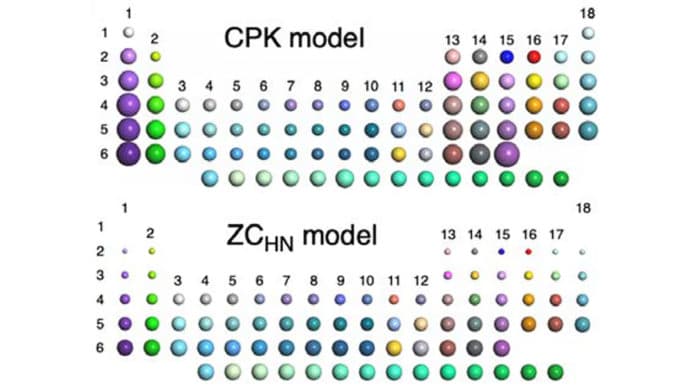There are numerous ways of making two-and three-dimensional models of atoms and particles. Using a state-of-the-art approach that can image samples at the atomic scale, scientists observed that traditional molecular models did not fit the images they saw.
As a solution, scientists devised a better way to visualize molecules, building on these traditional methods. Their models fit the imaging data they acquire well, and they hope the models can, therefore, help chemists with their intuition for interpreting molecular images.
You might be familiar with Ball and stick models. These models are three-dimensional models where spheres of different colors represent atoms, and sticks between the spheres represent bonds. Although these are useful educational tools, they are far simpler than the reality they reflect.
Generally, chemists use the Corey–Pauling–Koltun (CPK) model, which is similar to the ball-and-stick model but with the balls inflated to overlap. The CPK model offers details about the interaction between molecule components better than the ball-and-stick model.
In recent years, scientists have been able to capture the structures of molecules and record their motion and interactions in videos. It was possible because of atomic resolution transmission electron microscopy (AR-TEM) technologies. Sometimes this is known as cinematic molecular science.
In any case, with this jump in our capacity to picture the invisible, the ball-and-stick or CPK models become an obstacle rather than a help.
When scientists from the Department of Chemistry at the University of Tokyo tried to fit these models with the images they were seeing. But they experience some problems.
Both the ball-and-stick and CPK models don’t demonstrate the true sizes of atoms that images from AR-TEM show. In AR-TEM images, the size of each atom directly correlates with that atom’s atomic weight.
Now, scientists opted to modify a ball-and-stick model to fit their images. Each nucleus in the model was sized according to the Z number of the nucleus it represents and named the Z-correlated (ZC) molecular model.
Nakamura said, “A picture is worth a thousand words, and you can compare AR-TEM images to the first-ever photograph of a black hole. They both show reality as never seen before, and both are far less clear than how people probably imagine those things should look. This is why models are so important: to bridge the gap between imagination and reality. We hope the Z-correlated molecular model will help chemists analyze electron microscope images based on intuition without even the need for any theoretical calculations and open up a new world of ‘cinematic molecular science.”
Journal Reference:
- Junfei Xing, Keishi Takeuchi, Ko Kamei, Takayuki Nakamura, Koji Harano, and Eiichi Nakamura. “Atomic-Number (Z)-Correlated Atomic Sizes for Deciphering Electron Microscopic Molecular Images. DOI: 10.1073/pnas.2114432119
